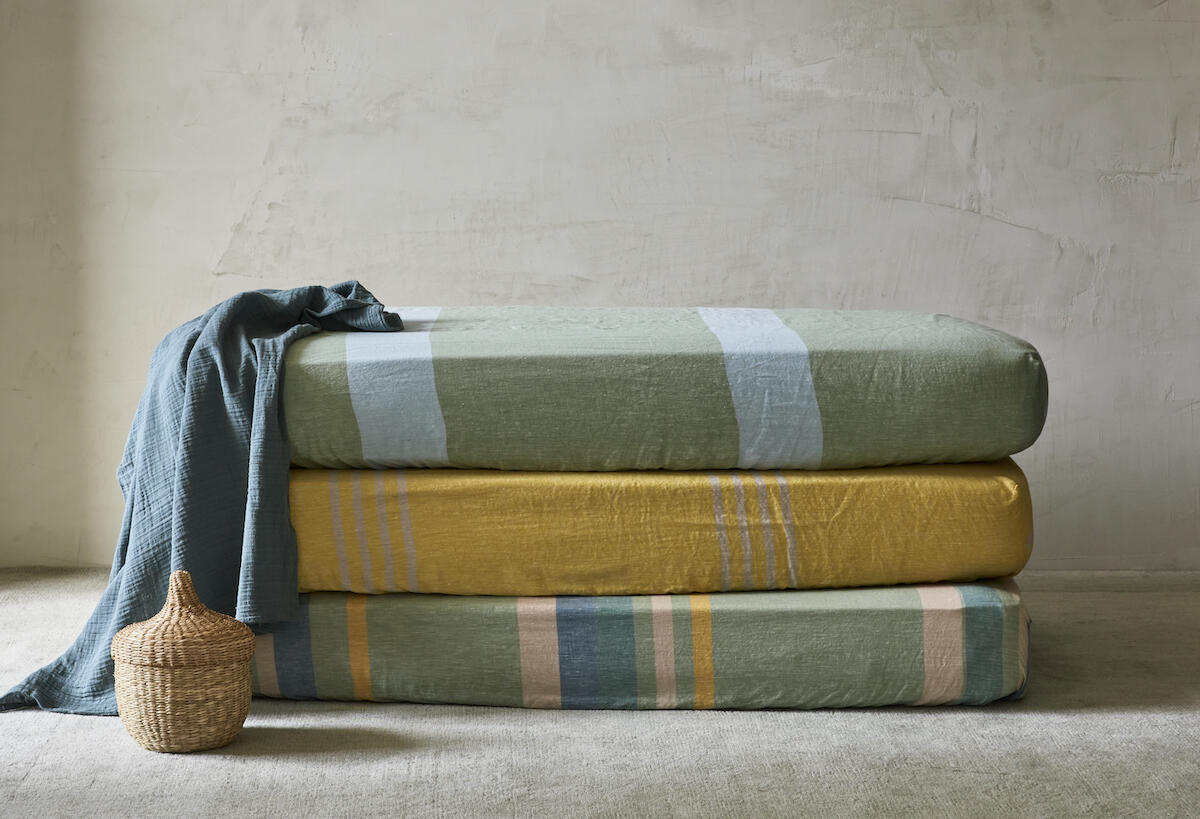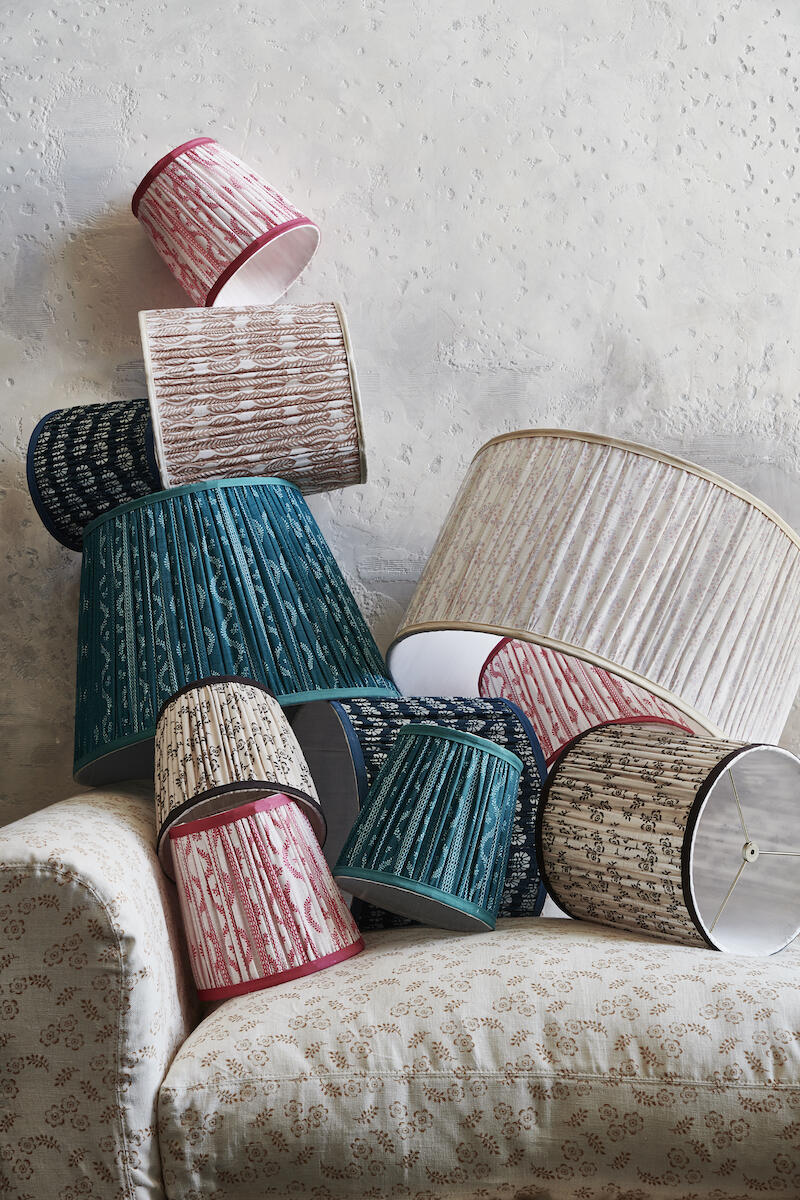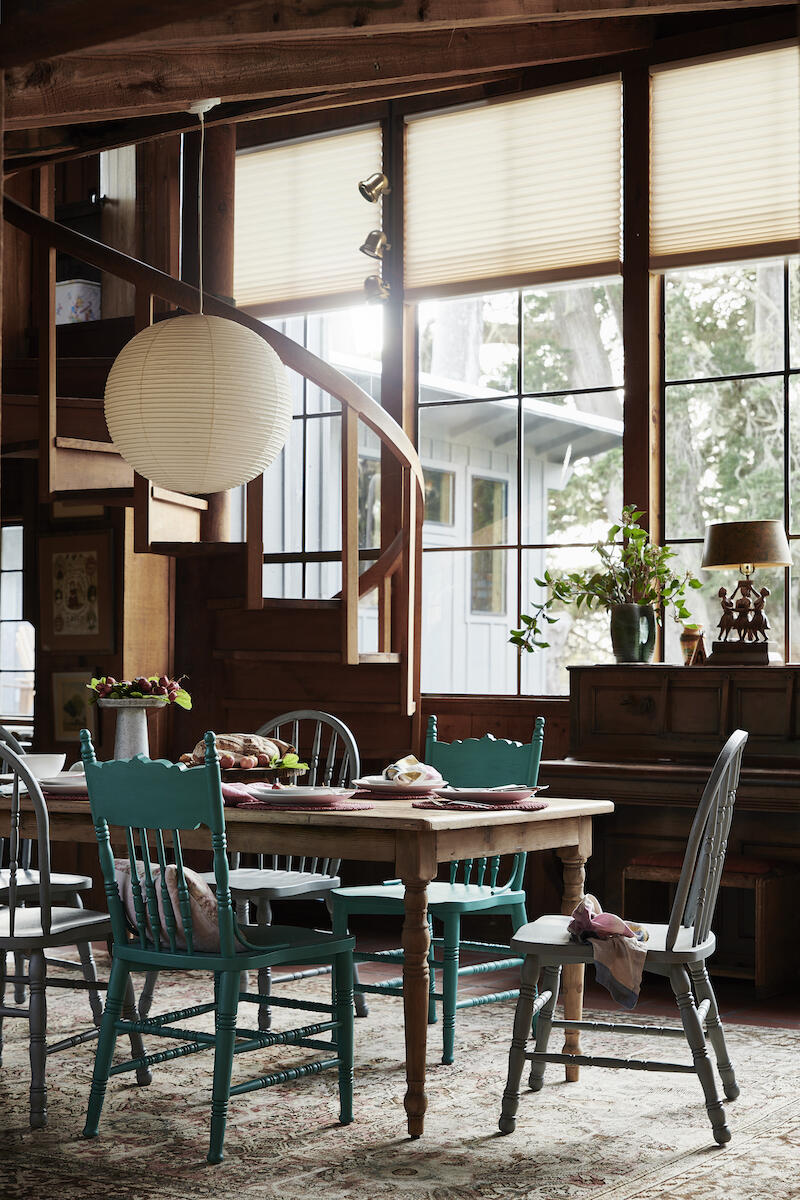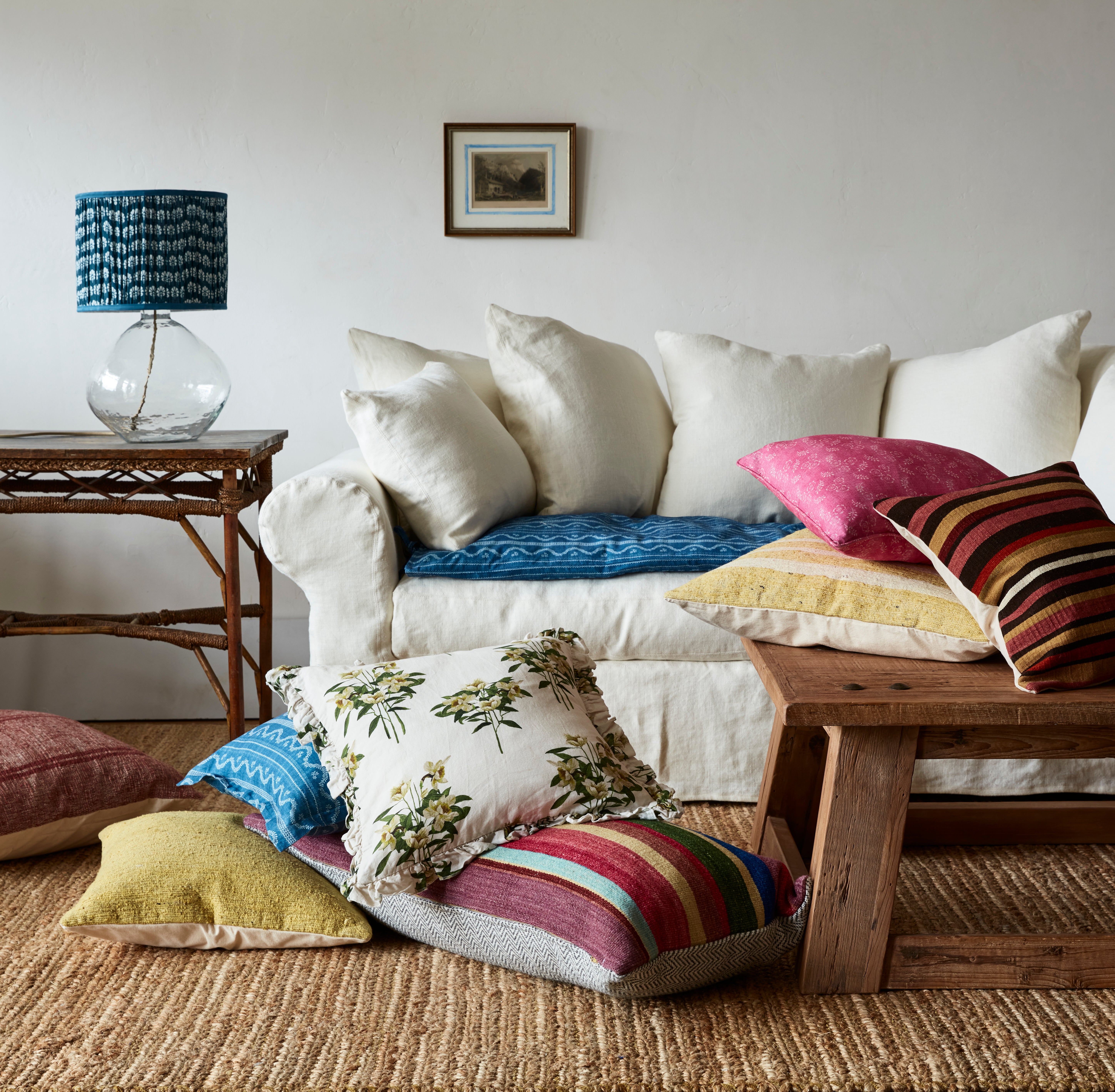When you think of what goes on at Williams-Sonoma’s headquarters, you probably aren’t imagining secret projects with code names. But that’s exactly what happened with GreenRow. Internally dubbed “Project Green” and launching today, it’s the home furnishing behemoth’s first new brand in 10 years. The project was so shrouded in mystery that, until recently, many who worked at Williams-Sonoma’s corporate office didn’t even know that Jaimee Seabury, GreenRow’s vice president of business development and strategy, was a fellow employee. So, why the secrecy?
The cloak-and-daggers approach was an effort not just to create a line that looked aesthetically different from the company’s other brands—including Pottery Barn, West Elm and Williams-Sonoma Home—but to create one that was more holistically sustainable than its sister brands and, for that matter, its competitors. GreenRow debuts with a colorful, whole home collection, from bedding to furniture to tabletop and lighting, with each piece sustainably sourced and manufactured. That means the line’s pendant lights are made from recycled glass, its upholstery can be stuffed with CertiPUR-US foam, and the patchwork quilts on offer are made from the dead stock of other Williams-Sonoma brands.
To create a sustainable brand on a scale expected for one of the largest home retailers in the U.S., Seabury traveled around the world, meeting with vendors and manufacturers looking for greener ways of doing business. The brand’s rugs, for example, are made from wool that comes from wild sheep in India in lieu of a more traditional farmed stock. “So much of this process was about doing research and learning,” says Seabury, who previously held roles in merchandising and buying for Anthropologie and Shabby Chic. “Farmed livestock has a lot of consequences like off-gassing large amounts of methane. Finding this alternative source where wild sheep can be shorn and then continue on their way—it was much more natural and environmentally friendly.”

Taking that even further, offcuts of the finished rugs are being used as upholstery for barstools, benches and ottomans. Similarly, offcuts from the brand’s bedding collection are used elsewhere in the line, in table napkins and even crib sheets for its baby assortment. Each piece will also come with specialized care instructions, in the hopes that customers can ensure the item’s longevity through proper maintenance.
It was important to Seabury that the GreenRow line be imbued with a vibrancy she felt was often lacking in sustainable home furnishings. “Typically, when you see sustainable products, it’s all natural wood and it’s all sort of organic-looking—you don’t see a lot of color or joy,” she says. “I think people are ready for a little bit more optimism in this space.”
On her travels, Seabury expected to be met with resistance from manufacturers who might not be interested in new ways of working. Asking a vendor to use something like recycled aluminum for sofa springs, for example, could ruffle feathers. “I was like, ‘They’re going to want to kill me because I’m asking for all these special materials,’” she recalls. “But instead they were so excited. One of them said to me, ‘This is the way forward. This is the way everyone should be operating.’ We’re excited to challenge ourselves to do this.”


Having the purchasing power of Willimas-Sonoma behind her made those conversations much easier—a leg up that Seabury readily recognizes. “I was able to start on third base here,” she says. For a furniture startup to make a piece with green materials from start to finish and abstain from packing with single-use plastics (another GreenRow priority) would be a monumental task that resulted in incredibly expensive furniture. GreenRow, on the other hand, is able to leverage its buying power and match the prices of its sister brands. “We know that our customers are willing to pay a little more for products that are made with environmental or social causes in mind,” she says. “It’s nice to be able to offer a brand that honors those aspects but is comparatively priced.”
The line will be available online and by catalog, the latter of which prompted some ethical concerns from Seabury. “The idea of even printing a catalog for a brand like this was hard to wrap my head around,” she says. That’s why she went on a quest to find the greenest way to make one, ultimately discovering a zero-waste printing plant used by Patagonia, itself a famously eco-friendly brand, that was built over a landfill and harnesses the methane it produces to power the plant. The paper itself is made from recycled paper pulp, and Seabury says the plant workers informed her that the ink was so clean she could drink it. She declined the offer but was thrilled to hear it.
Though GreenRow was siloed while in development at Williams-Sonoma, Seabury is hopeful that the brand can act as a kind of sustainability testing ground for its sister companies now that the veil of secrecy has been lifted. GreenRow can test out alternative materials for packaging—Seabury is currently excited about a styrofoam substitute made from shrimp shells—before West Elm, for example, adopts it as well.
If GreenRow and its sibling heavy hitters can show that implementing sustainable materials and practices are possible on a mass scale, Seabury hopes it will clear the way for other home companies to do so as well. “That’s what’s most exciting to me,” she says. “We’re a small brand within a major company, and we can explore these options and blaze a path for the entire industry to follow.”
Homepage image: GreenRow’s Pillow Topper in Indigo Floral Scallop | Courtesy of GreenRow





























